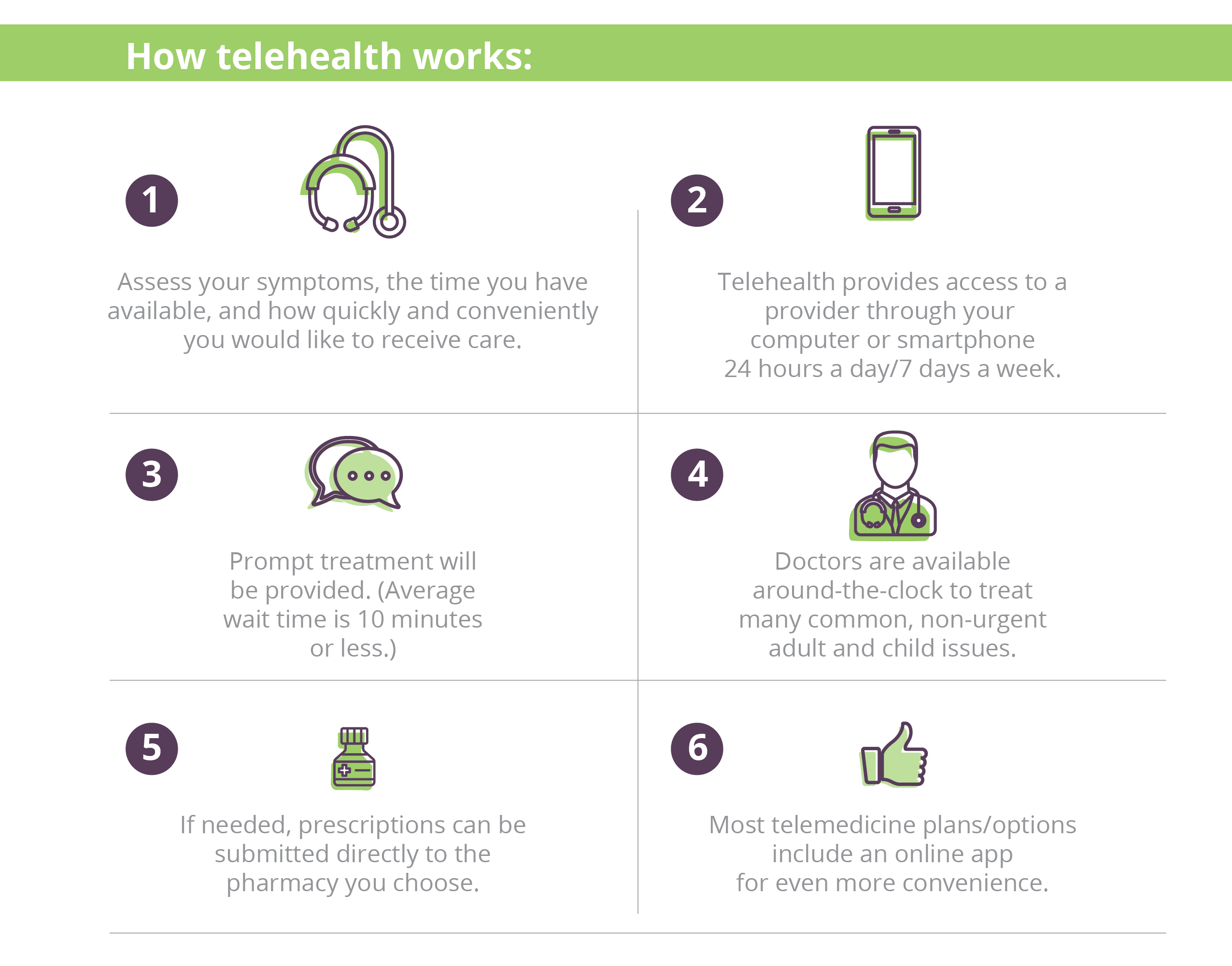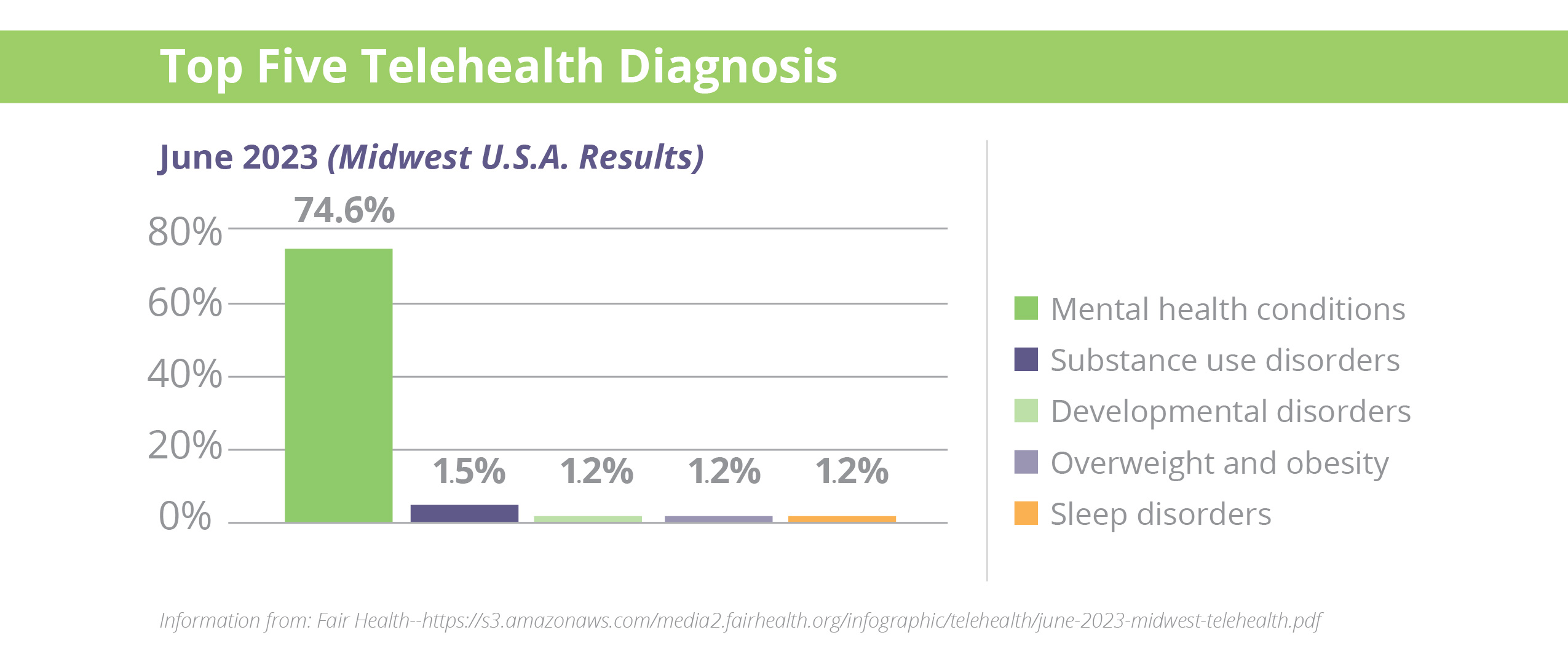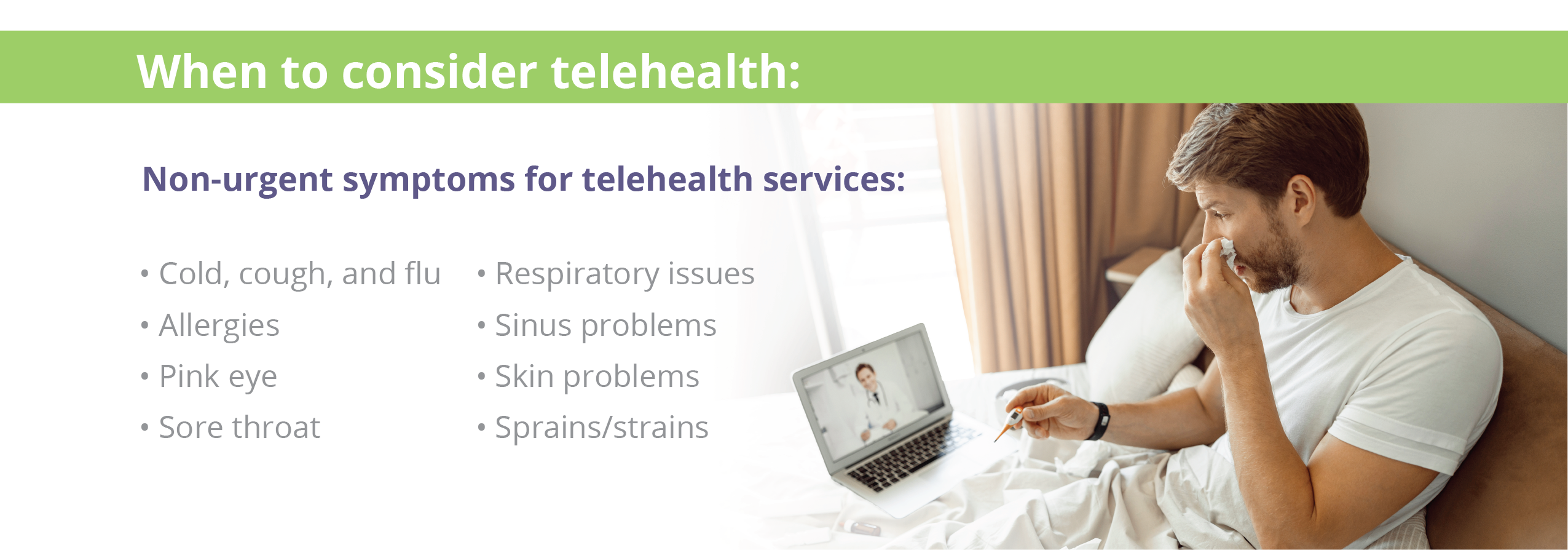
Once a limited and isolated service, telehealth has grown in scope and reach to become a standard way many of us receive healthcare today. The development of digital health tools has given patients more options to control when, where, and how they access care. For our members, telehealth is valuable for many types of visits, mostly those that involve physical health issues that do not require a physical exam or procedure. It’s an efficient tool for both our members and for their care providers. More and more members appreciate the convenience of telehealth and the opportunity to receive professional care, without a trip to a medical office.
What is telehealth and how does it work?
Telehealth refers broadly to electronic and telecommunications technologies and services used to provide care and services at a distance. What's the difference between telemedicine and telehealth? Telemedicine refers specifically to remote clinical services, while telehealth can refer to remote non-clinical services—like mental health services.

Telehealth services can improve access to care
Today, most states have enacted “parity” laws, which generally require health insurers to cover services provided through telehealth the same way services are reimbursed for in-person visits and state policymakers are increasingly focusing their attention on this.
Telehealth can improve access to care and create more affordable and viable options, especially in underserved geographic areas. In addition to increasing healthcare value and affordability, telehealth service (or virtual care technology) can:
- Save time and money
- Reduce emergency room visits
- Reduce urgent care center visits
- Help address physician burnout
- Allow more time for patients with each visit
State-by-state regulatory rules means that healthcare providers must navigate a sea of regulations that govern telehealth, as each state has its own rules that govern which types of care can be provided by virtual means, and even what methods of treatment can be used in different care settings.

Who accesses telehealth?
Over 22% of adults report using telehealth services in the last 4 weeks, according to a 2022 study by the U.S. Department of Health and Human Services (HHS). The highest rates of telehealth usage were among Medicaid and Medicare populations, and also among those earning less than $25,000/year. Additionally, those with lower household incomes tend to use phone appointments to consult with their providers, while higher income brackets opt more often for video appointments. When looking at age, one in four Americans that are in their 70s and older used telehealth services that year.
Though telehealth services have grown in recent years, difficulties scheduling mental health appointments continues to be a problem for many. One in three survey respondents who have sought to make an appointment for mental health services say they had difficulty scheduling an appointment in the past several years.

What do patients think of virtual care?
According to the American Medical Association, patients overall have had positive experiences with telehealth and don’t want to see it go away. Among those surveyed:
- 79% were very satisfied with the care received during their last telehealth visit.
- 81% said the provider was thorough.
- 84% were confident their personal information was secure and private during the visit.
- 83% believed the quality of the patient-physician communication was good.
- 73% will continue to use telehealth services in the future.
- 41% would have chosen telehealth over an in-person appointment for their last visit, even if both required a copay.
PHP’s Telehealth Services
PHP members (with a full-risk or level-funded product) have access to two telehealth services, Parkview OnDemand and MyNurse 24/7.
Parkview OnDemand is available to PHP members with no out-of-pocket cost share. This service is provided for non-emergency health issues, and when members would prefer to access professional care at their convenience.
PHP also offers a 24-hour nurseline, MyNurse 24/7. This toll-free help line is for noncritical health situations and allows members to speak with experienced, knowledgeable nurses about specific health concerns.
Telehealth services are here to stay
With the growing popularity of telehealth services, we will likely see permanent changes in regulatory standards for telehealth services. Also, many doctors, who see value in patients getting care quickly (or at the right time) are encouraged by the adoption of telehealth services. If regulatory and payment options evolve, doctors will have the opportunity to grow telehealth services to improve patient wellness and health outcomes in the long run.
Sources:
AMA: Patients, doctors like telehealth. Here’s what should come next
McDermott Will & Emery: WHAT’S PERMISSIBLE IN YOUR STATE? State Guide to Telehealth
FairHealth


